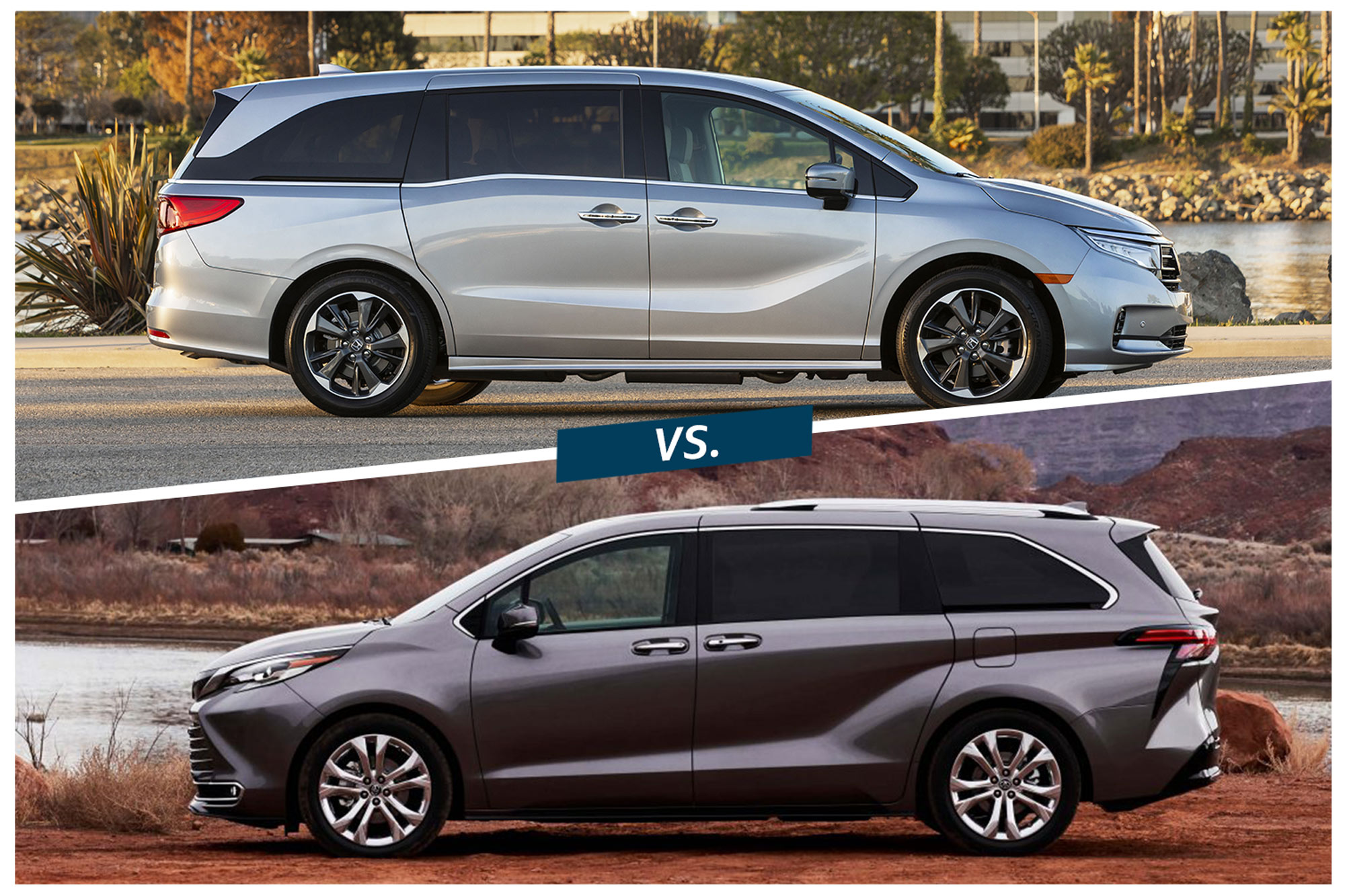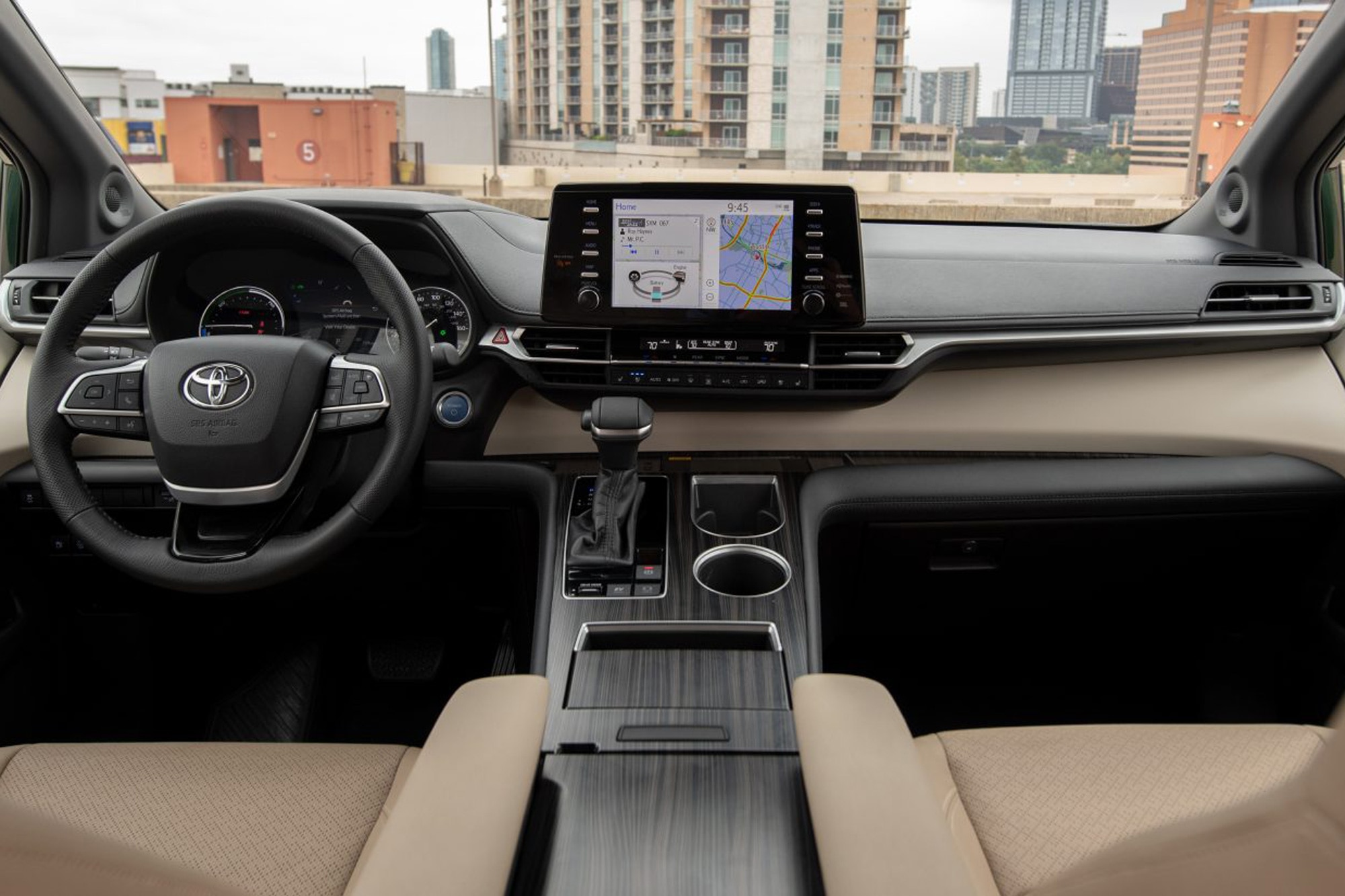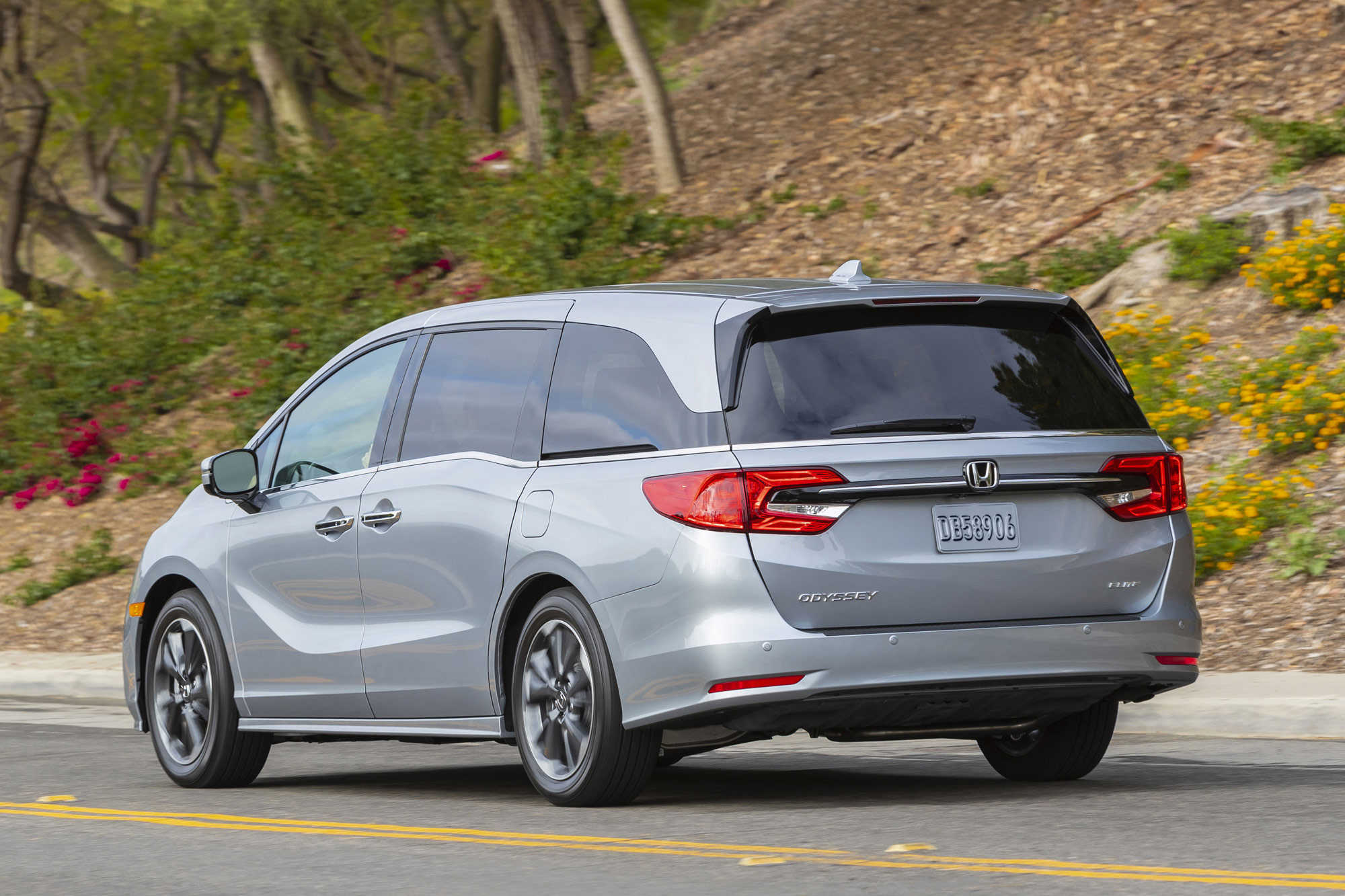Compared: 2024 Toyota Sienna vs. 2024 Honda Odyssey
The Sienna leads in efficiency and price, but the Odyssey's configurable cabin is a strong selling point.
 Honda | Toyota
Honda | Toyota
Looking for a low-sill, high-seat, feature-laden kid carrier? Nothing will serve your needs quite so well as one of the four minivans available on the market. If you are partial to Japanese brands, you can narrow the list down to two: the Toyota Sienna and the Honda Odyssey.
The Sienna is the better buy, but the Odyssey has a few features that set it apart.
 Toyota
Toyota
Toyota Undercuts Honda but Not by Much
The Sienna and the Odyssey both start at around $39,000. The Sienna, equipped with a four-cylinder hybrid powertrain making 245 horsepower, isn't as spirited as the Odyssey, which employs a 280-hp naturally aspirated V6, but then few people buy a minivan based on its zero-to-60-mph time.
 Honda
Honda
One thing consumers tend to care more about is the availability of all-wheel drive, which only the Sienna can claim. The switch from one drive axle to two comes at a $2,000 premium on all Sienna trims except the ostensibly outdoorsy Woodland Edition, where it's standard.
 Toyota
Toyota
Honda Offers a Flexible Seating Plan, While Toyota Piles On the Amenities
In base form, both the Sienna and the Odyssey impress with a wealth of standard features. In addition to the requisite stowable third row, second-row sunshades, and power-sliding side doors, the entry-level models boast eight-passenger seating, adaptive cruise control, blind-spot monitoring, brake hold, wired Apple CarPlay and Android Auto functionality, and push-button start.
Toyota doesn't pair push-button start with proximity-key entry in the base trim Sienna, so drivers need to hold the fob to unlock the van but not to start it. Meanwhile, Honda not only includes proximity-key entry and remote start in the Odyssey, but it enables the vehicle to recognize when the driver walks away with the fob and trigger the door locks automatically.
 Honda
Honda
Also working in the Odyssey's favor is its configurable Magic Slide second row, which allows seats to move and be removed from the three-across bench. Toyota counters with super-long-slide captain's chairs — some with extendable ottomans — in its seven-seat configurations.
The two vans are equally spacious and capable, with 163 cubic-feet of passenger volume and 3,500-pound tow ratings. The Sienna has more USB ports throughout the cabin, a larger touchscreen in the center stack, and a more efficient powertrain under the hood. And while no Odyssey has heated captain's chairs or a head-up display, certain Siennas do.
Then again, Honda provides a bird's-eye-view camera system as standard fare, whereas Toyota reserves it for its top trim. And though both vans offer a fold-down screen to keep the kids entertained and an intercom so the driver can talk to people in the back without turning around, only the Odyssey has available rear-seat video monitoring. Honda calls it CabinWatch.
 Toyota
Toyota
Surprising No One, the Hybrid Sienna Is More Efficient
The front-wheel-drive Sienna earns an EPA rating of 36 mpg city/highway/combined. The all-wheel-drive model does a little worse in the city, getting 35/36/35 mpg.
 Honda
Honda
The Odyssey — managing 19/28/22 mpg — is practically a gas guzzler by comparison.
All vehicle pricing includes MSRP plus destination charges (set at the time of publication) and will be rounded to the nearest thousand.
Written by humans.
Edited by humans.
 Beth Nichols
Beth NicholsAfter graduating from the University of Michigan, Beth Nichols stumbled into automotive journalism and found her footing, jumping between a few car magazines before going freelance. Her head, once full of useless facts about literature and art history, now holds useless facts about vehicles. She edits, checks, and occasionally creates content for Capital One, and though she understands it’s customary to write a bio in the third person, I don’t like it.
Related articles
View more related articles